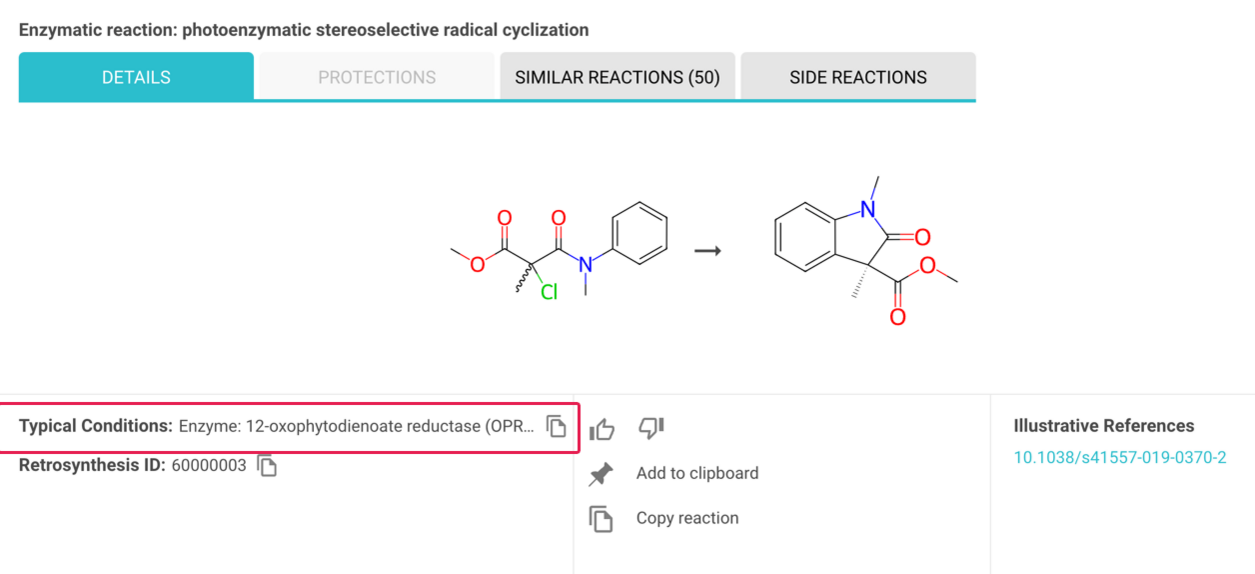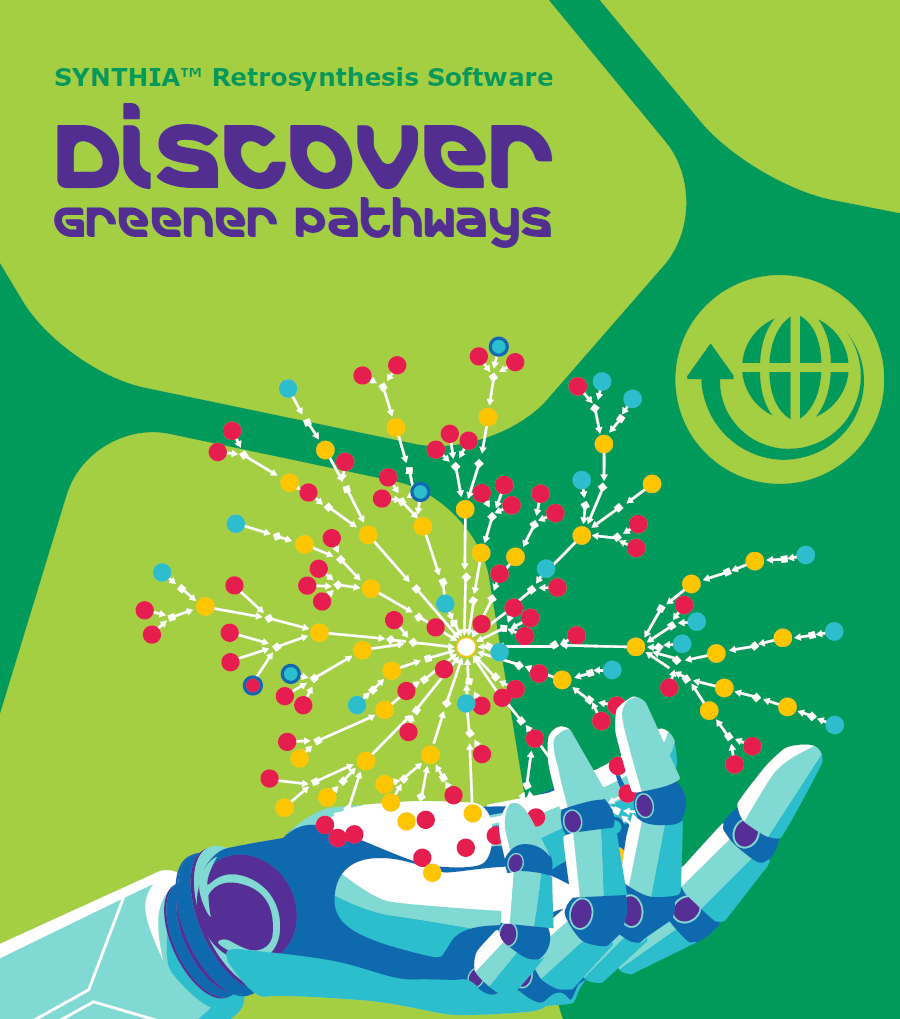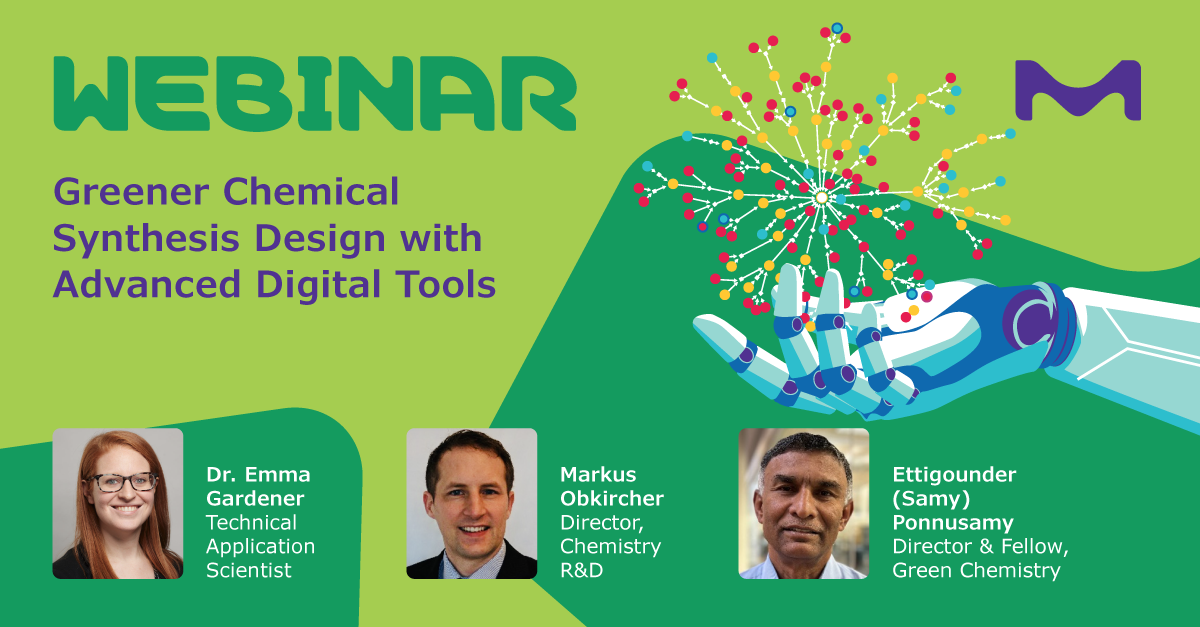Green Chemistry
Advancing Sustainable Synthesis with SYNTHIA®
At SYNTHIA®, we are dedicated to promoting green chemistry by optimizing synthetic routes to minimize environmental impact and enhance efficiency. Our retrosynthesis software leverages the 12 Principles of Green Chemistry to design pathways that are not only effective but also sustainable. By focusing on atom economy, waste prevention, and the use of safer solvents, SYNTHIA® helps chemists achieve greener synthesis processes.
Key Features of SYNTHIA® for Green Chemistry
Greener Alternatives and Sustainability Information
SYNTHIA® clearly labels building blocks that support green chemistry within pathways. And it is highlighting those that are part of our Greener Alternative Product portfolio. These products are aligned with the EPA Safer Chemical Ingredients List, ensuring that chemists can make informed choices about the sustainability of their materials. The software also provides easy access to detailed information on building blocks, including links to PubChem and chemical hazard symbols.

Enzymatic Reactions
Our database includes expert-coded enzymatic chemistry, offering information on reaction conditions, enzyme details, and reference links. This feature supports the use of biocatalysis, a key component of green chemistry. It is providing pathways that utilize enzymes to achieve more sustainable chemical transformations.

Shared Path Library
The Shared Path Library feature enables multitarget-oriented analysis, allowing chemists to conduct automatic retrosynthetic analysis for entire target libraries. This functionality prioritizes routes with shared synthetic steps, optimizing resource use and minimizing waste.
Customization for Sustainable Pathways
SYNTHIA® offers limitless options for customization, allowing chemists to tailor pathways to their specific sustainability goals. Users can avoid gaseous reagents, metal catalysis, and toxic or hazardous molecules, while also defining starting materials from commercial or published sources, or internal inventories. This flexibility ensures that chemists can find the most sustainable pathways to meet their synthetic needs.
Customization Options
- Avoid gaseous reagents/reactants
- Avoid metal catalysis
- Number of steps
- Cost of starting materials
- Protecting group requirements
- Bond disconnections
- Avoid toxic or hazardous molecules
- Catalyst/reagents type
- Exclude or promote chemistry reaction classes, e.g., reactions catalyzed by enzymes
- Define starting materials: Commercial, published, or internal inventory
Case Studies in Green Chemistry
Case Study 1: Lithium Chromoionophore Synthesis
Using SYNTHIA®, we optimized the synthesis of a lithium chromoionophore, significantly improving yield and reducing synthesis time. The software identified a better commercially available starting material, eliminating unnecessary steps and reducing the overall cycle time from nine days to one. This approach not only improved the yield by 260% but also reduced labor costs by 60%.
Case Study 2: 6-Formylpterin Synthesis
For 6-formylpterin, a compound associated with various biochemical processes, SYNTHIA® proposed a shorter, more atom-economical route. This new pathway reduced the step count by 50% and cut material costs by 98%, leading to a 77% overall cost reduction compared to traditional methods.
Conclusion
SYNTHIA® Retrosynthesis Software empowers chemists to design sustainable synthetic pathways that align with green chemistry principles. By integrating advanced algorithms and expert-coded rules, SYNTHIA® not only enhances efficiency but also supports environmental stewardship in chemical synthesis.
DOZN®
The DOZN® tool is a industry-first quantitative tool that uses the 12 Principles of Green Chemistry for comparing the relative greenness of similar chemicals, synthetic routes, and chemical processes. These principles distill into three major categories: improving resource use, more efficient use of energy, and minimizing human and environmental hazards. The results are presented for each principle, for each major category and as an overall aggregated score.

Webinar “Greener Chemical Synthesis Design”
Designing an efficient process for synthesizing a target compound with a reduced environmental impact presents numerous challenges depending upon the scope of the project and the industry. Learn how powerful tools are being used by organic chemists to predict feasible synthetic routes starting from commercially available raw materials.
Two Green Chemistry Case Studies
Computer-Assisted Synthetic Route Optimization using SYNTHIA® Retrosynthesis Software
Various challenges and considerations exist when designing an efficient process for synthesizing a target compound depending upon the scope of the project and industry. Using SYNTHIA® to aid in the route design process allows a chemist to quickly select pathways that meet key criteria of the project, including using commercial starting materials within a set price range or avoiding certain hazardous reagents or reaction types.


Brochure
Designing an efficient process for synthesizing a target compound with minimal environmental impact presents numerous challenges. Our powerful retrosynthesis software,
SYNTHIA®, can greatly facilitate prediction of more sustainable synthetic routes, starting from commercially available raw materials. Download the comprehensive overview.

Reach out to us
Quickly go from imagining what’s possible to testing what’s probable with a license that fits your needs.
SYNTHIA® News
in Your Inbox
